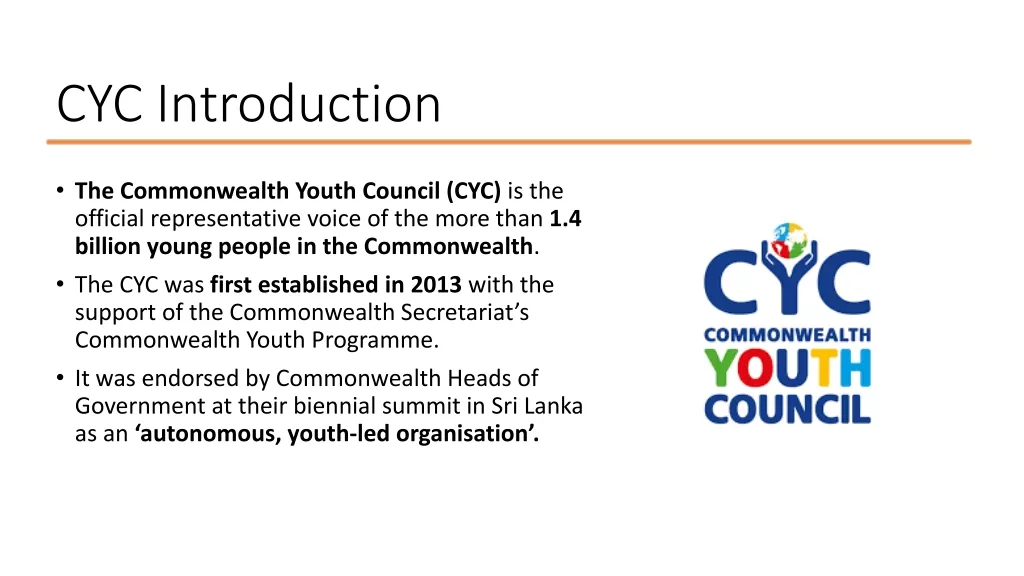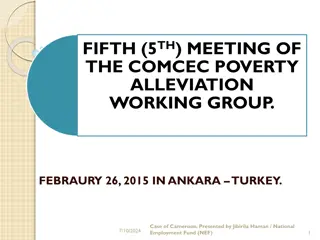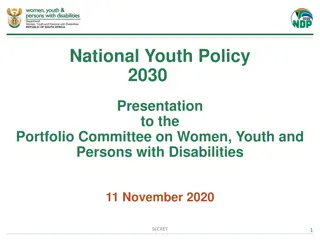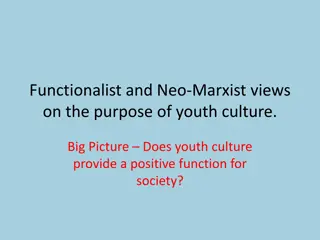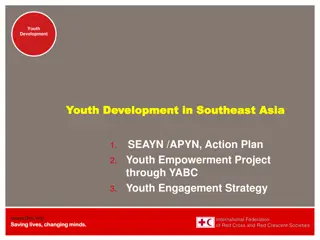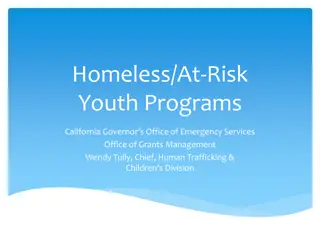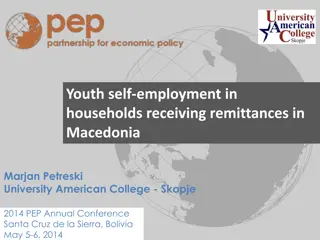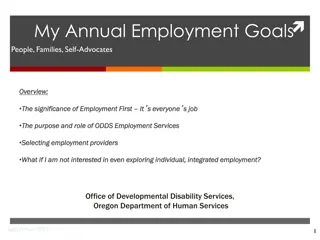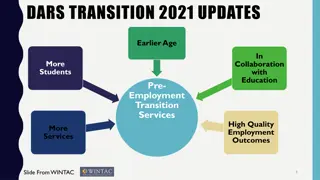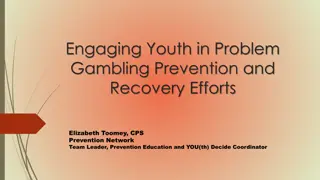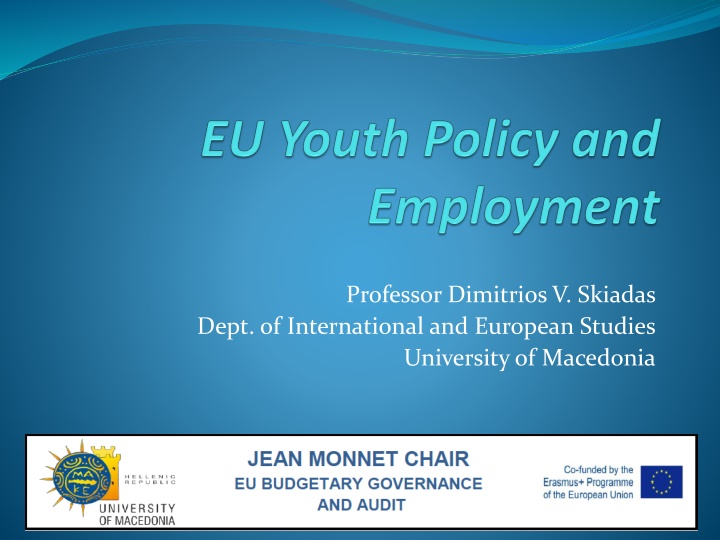
Addressing Youth Unemployment in the European Union
Explore the European Commission's efforts to tackle youth unemployment in the EU through initiatives like the EU Youth Strategy. Learn about the current challenges faced by young people in the job market and the strategies in place to improve youth employment rates and opportunities within the EU.
Download Presentation

Please find below an Image/Link to download the presentation.
The content on the website is provided AS IS for your information and personal use only. It may not be sold, licensed, or shared on other websites without obtaining consent from the author. If you encounter any issues during the download, it is possible that the publisher has removed the file from their server.
You are allowed to download the files provided on this website for personal or commercial use, subject to the condition that they are used lawfully. All files are the property of their respective owners.
The content on the website is provided AS IS for your information and personal use only. It may not be sold, licensed, or shared on other websites without obtaining consent from the author.
E N D
Presentation Transcript
Professor DimitriosV. Skiadas Dept. of International and European Studies University of Macedonia
INTRODUCTORY REMARKS Recently the European Commission announced the launch of an 8 million campaign aiming to highlight the EU s importance to the futureof theyoung peopleof the Union. The central message of the campaign is to show how the EU gives every person the power to do what they love. The campaign will entail five videos, shown across the continent during this summer, aiming at the audience of 17-34-year-olds (the themes include, for instance, a young girl lost in a forest and being escorted home by a brown bear, a lone person using EU funded internet access at his remote home to order products with the aim of chatting up, or a young man using his love of dance to set up a business teaching the elderly in a care home). According to the official announcement The main purpose is to inform about the many opportunities the EU offers as well as to motivate young people to discuss and share their own ideas on Europe its values and its future. The cost of the scheme amounts to two cents per citizen for a campaign that informs them of their rights and benefits of which unfortunately the majority are currently unaware .
YOUTH (UN)EMPLOYMENT IN THE EU Why such a bid togetdown with theyouth has been deemed necessary for the EU? According to the findings of EUROSTAT, in 2016, more than 6,3 million young people (aged 15-24 years) were neither in employment nor in education or training in the EU. More than 4.2 million young people (aged 15-24 years) were unemployed in 2016 in the EU. Although it has decreased from more than 23% in 2013 to less than 19% in 2016 the youth unemployment rate is still very high in the EU (with peaks of more than 40% in several countries). Long-term youth unemployment is still at record highs. The EU youth unemployment rate is more than double the overall unemployment rate (around 19% compared with 9% in 2016) and masks big differences between countries: there is a gap of more than 30% between the Member State with the lowest rate of youth unemployment (Germany at 7%) and the Member States with the highest rates, Greece (47%) and Spain (44%). In 2016, the overall employment rate for young people (34%) were still 4% lower than in 2008. 11% of thoseaged 18-24 were early school leavers in 2016. High youth unemployment co-exists sometimes with increased difficulties in filling vacancies. This points to the existence of labour market mismatches (structural unemployment), due to inadequate skills, limited geographic mobility or inadequate wage conditions.
CURRENT EU ACTION ON YOUTH The EU supports Member States in reducing youth unemployment and increasing the youth employment rate in line with the wider EU target of achieving a 75% employment rate for the working-agepopulation (20-64 years). EU Youth Strategy: framework for European cooperation in the youth field for 2010- 2018. Legal basis: Council Resolution on a renewed framework for European cooperation in the youth field (November 2009). Content: The aim is to improve the situation of young people in Europe by creating more and equal opportunities for them in education and the labour market and by promoting their active citizenship, social inclusion and solidarity. To achieve this, the Strategy seeks to develop a transversal approach to youth issues. Using the Open Method of Coordination (OMC) in the youth field, the EU Youth Strategy goes beyond youth- specific initiatives by adding a mainstreaming dimension in view of linking EU youth policy to the EU strategies foreducation, employmentand social inclusion. Thus, EU Member States have been invited to cooperate on youth-related issues by setting common objectives and possible initiatives in eight fields of action, covering both core areas of youth policy (participation, voluntary activities, culture and creativity, youth and the world) as well as areas addressing young people s socio- economic issues (education and training, employment and entrepreneurship, health and well-being, social inclusion).
During its first five years, the EU Youth Strategy was implemented in a rather negative economic context. The situation of young people deteriorated in terms of unemployment, social exclusion and risk of poverty in the aftermath of the economic crisis in Europe. This meant that initiatives to ease youth unemployment and to improve education and training moved up the policy agenda in most Member States and at EU level. Youth unemployment and social exclusion became an issue of great urgency for the EU cooperation in theyouth field. Furthermore, in parallel to the EU Youth Strategy, attention to youth employment and social inclusion was included in various EU strategic policies. Member States discussed youth unemployment at the highest level in the EU and reached common positions on key youth-related initiatives at EU level, such as the Youth Guarantee. This meant that while the youth agenda gained stronger importance, it became rather focused on the topics of employability while lesser attention was being paid to core youth policy issues, such as civic participation orvolunteering.
The 2016 Communication December 2016: European Commission s Communication Investing in Europe s Youth The Commission proposes a renewed effort to support young people in the form of a package. The Youth Packageentails 3 strands of action : Betteropportunities toaccess employment Betteropportunities through education and training Betteropportunities for solidarity, learning mobility and participation Better opportunities to access employment: Full and sustainable implementation of the Youth Guarantee on the ground, supported by the European Semester that drives reforms at a national level. To facilitate this end, the Commission has proposed to supplement the original allocation of theYouth Employment Initiative by EUR 1 billion until 2020. Better opportunities through education and training: Facilitating the cooperation between Member States and supporting their efforts to reform education and training systems. The Commission is especially committed to create better conditions for apprentices by proposing a Quality Framework for Apprenticeships, supporting Member States in establishing modern apprenticeship systems and introducing the new long-term mobility strand forapprentices "ErasmusPro" in the Erasmus+ programme. Better opportunities for solidarity, learning mobility and participation: The Commission has proposed an increase of EUR 200 million in Erasmus+ budget until 2020. Encouraging the participation of young people in society and solidarity work, entails the revision of the European Youth Strategyand setting up a European Solidarity Corps.
Quality Framework for Traineeships Traineeships are becoming increasingly common for young people during or after their studies, as they can help them to gain relevant experience and find a foothold in the labour market. According to Eurobarometer, 7 out of 10 ex-trainees found their traineeship useful in finding a regular job. However, there are concerns about the quality of traineeships, as they tend to be schemes for misusing young people as a cheap or free labour force, without helping the trainee to get a foothold on the labour market. Such concerns refer particularly to insufficient learning content and substandard working conditions. The European response to these concerns has been the adoption, in 2014, of a Council Recommendation on a Quality Framework for Traineeships (QFT), despite the lack of a relevant social partner agreement. The QFT proposes guidelines for traineeships outside formal education to provide a high quality learning content and fair working conditions so that traineeships support education-to-work transitions and increase the employability of trainees. The QFT also contains guidelines on transparency regarding compensation and social security coverage, as well as hiring chances. These aspects should be clear to applicants already at the stageof theapplication fora traineeship position. The 22 quality elements that are part of the QFT are directly transposable into national legislation or social partner agreements. The QFT is particularly relevant as a reference for quality offers of traineeships under the Youth Guarantee, since many national Youth Guarantee schemes foresee traineeships as one of the four types of offers for young people. Half of the EU Member States undertook the relevant legislative action, while the remaining states declared that their national arrangements meet the standards of the QFT.
European Framework for Quality and Effective Apprenticeships Apprenticeships are one successful form of work-based learning, as they ease the transition from education and training to work. Countries with strong apprenticeship schemes demonstrate lower levels of youth unemployment. Apprenticeships formally combine and alternate company-based training with school-based education and lead to a nationally recognised qualification upon successful completion. Most often there is a contractual relationship between the employer and the apprentice, with the apprentice being paid for his/her work. Thus, well-designed apprenticeship schemes benefit both employers and learners. Quality and effective apprenticeships are established through structured partnerships involving all relevant stakeholders, particularly social partners, businesses, chambers of industry, commerce and crafts, professional and sectorial organisations, vocational education and training institutions, youth and parent organisations, as well as local, regional and national authorities. Since 2013, the Commission in cooperation with Member States and relevant stakeholders promotes the supply, quality and image of apprenticeship through the European Alliance for Apprenticeships, which has so far mobilised more than 700.000 offers for apprenticeships, traineeships or first jobs offers. Business led initiatives like the European Pact for Youth have mobilised more offers and helped promote business-education partnerships across the Union (overall aim of 10,000 quality business-education partnerships, with the shared target to establish together at least 100,000 new good qualityapprenticeships, traineeships orentry-level jobs). Following the Commission s proposal, the Council adopted (2018) a Recommendation on a European Framework for Quality and Effective Apprenticeships, setting out common criteria for this purpose. The Member States are asked to ensure that apprenticeship schemes are responsive to labour market needs and provide benefits to both learnersand employers, by building on these criteria. The criteria entail the existence of a written agreement, focus on learning outcomes, providing pedagogical support, existence of pay/compensation, provision for social protection and proper work, health and safety conditions, establishing clear regulatory framework, involving social partners, promoting mobility and careerguidance, etc.
European Solidarity Corps The European Solidarity Corps is the new European Union initiative which creates opportunities for young people to volunteer or work in projects in their own country or abroad that benefit communities and people around Europe. The mission of the scheme is to bring together young people to build a more inclusive society, supporting vulnerable people and responding to societal challenges, in the form of an inspiring and empowering experience foryoung people whowant to help, learn and develop. European Solidarity Corps is based on certain principles, which must be upheld by all participants, and they include, inter alia, the following: European Solidarity Corps participants embrace the values of solidarity, respect for human dignity and human rights, and believe in the promotion of a fair and equal society in which pluralism, non- discrimination, tolerance, justice, solidarity and equality prevail; European Solidarity Corps participants strive to enhance solidarity between people, while respecting their cultures and their traditions, and aim to build a community of shared responsibilities and mutual support; Joining or resigning the European Solidarity Corps is made on a voluntary basis. No payment is involved. When accepting a placement for a volunteering activity, the participants will sign a Solidarity Contract detailing the conditions of theiractivity. European Solidarity Corps projects will beavailable to people up to the age from 18 to 30 years old. European Solidarity Corps participants are invited to join a wide range of projects, such as helping to prevent natural disasters or rebuild afterwards, assisting in centres for asylum seekers, or addressing different social issues in communities. Projects supported by the European Solidarity Corps can last from two to twelve months. They will usually be located within the European Union Member States.
Financing - The Youth Employment Initiative The Youth Employment Initiative (YEI), adopted in 2013, is one of the main EU financial resources to support the implementation of Youth Guarantee schemes. It was launched to provide support to young people living in regions where youth unemployment was higher than 25% in 2012. It was topped up in 2017 for regions with youth unemployment higher than 25% in 2016. The Youth Employment Initiative exclusively education, employment or training, including the long-term unemployed or those not registered as job- seekers. It ensures that in parts of Europe where the challenges are most acute, young people can receive targeted support. Typically, the YEI funds the provision of a) apprenticeships, b) traineeships, c) job placements,d) furthereducation leading toaqualification. The Youth Employment Initiative is complementary to other actions undertaken at national level, supported in particular by the European Social Fund (ESF), that aim to implement youth guarantee schemes. The ESF can reach out beyond individuals, helping reform employment, education and training institutes and services. The total budget of the Youth Employment Initiative (for all eligible EU Member States) is 8.8 billion for the period 2014-2020. The initial budget of 2014-2015 was 6.4 billion; however, in September 2016, given the still high levels of youth unemployment, the Commission proposed to increase this budget. In June 2017, the Council and the Parliament agreed to an increase of the YEI by 2.4 billion for eligible Member States for the period 2017-2020. Of the total budget of 8.8 billion, 4.4 billion comes from a dedicated Youth Employment budget line, which is complemented by 4.4 billion more from ESF national allocations. The ESF contribution is topped up by the eligible Member States' own financial resources. The YEI is implemented in accordance with ESF rules. In order to mobilise faster YEI actions on the ground, substantial funding was released to Member States in the form of pre-financing, which in 2015 was exceptionally increased to 30% of the special YEI budget line. supports young people who are not in
Future Considerations The policies exist. What about the resources? In the Commission s Communication A Modern Budget for a Union that Protects, Empowers and Defends-The Multiannual Financial Framework for 2021-2027 , while in a prima facie examination it appears that the ESF will remain within the field of the EU Cohesion Policy, the accompanying Annex provides a different picture, with the European Regional Development Fund and the Cohesion Fund set to support Cohesion Policy with a much reduced budget and without the ESF. The ESF+ has its own section, its own budget line, and brings in other funds such as the Youth Employment Initiative, the Fund for European Aid to the Most Deprived, the Employment and Social Innovation Programme and the Health Programme. Crucially, there is no reference to the ESF supporting Cohesion policy in the Annex. Of course, presenting the ESF in a different sub-heading of the MFF may be a mere window-dressing exercise to appease DG EMPL that the ESF will have its own place in the MFF. But current rumours about the ESF being a national instrument after 2020, devoid of a territorial dimension and directly linked to the implementation of structural reforms iscause forconcern. This means that even if the ESF is formally included in the Cohesion Policy architecture and overall funding, it may be a structural fund in name only and become a totally different instrument after 2020. This is very bad news for Member States with regionalised ESF programmes and those who believed that reinforcing social, economic and territorial cohesion required an integrated approach. An approach necessary for supporting youth actions at regional level
THANK YOU FOR YOUR ATTENTION!!!!!!


